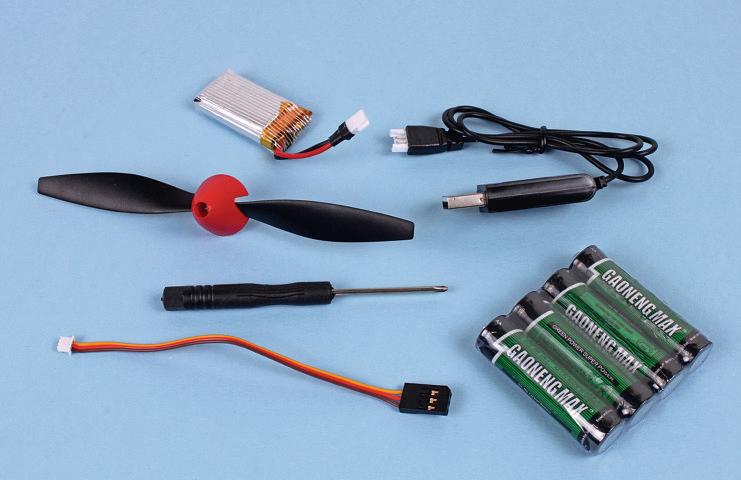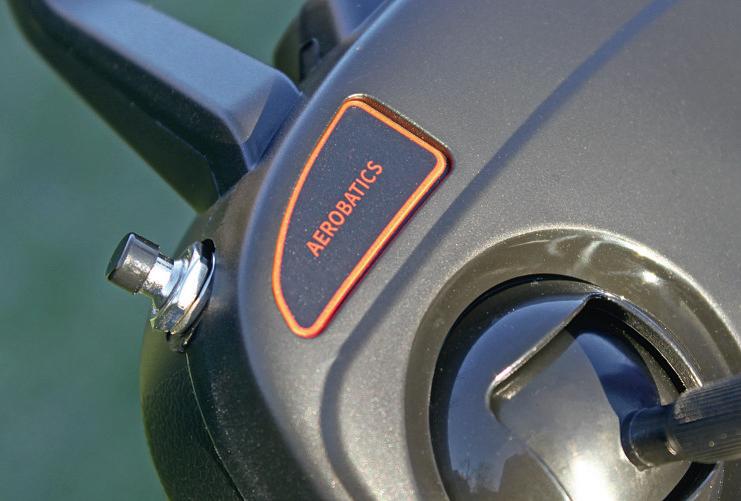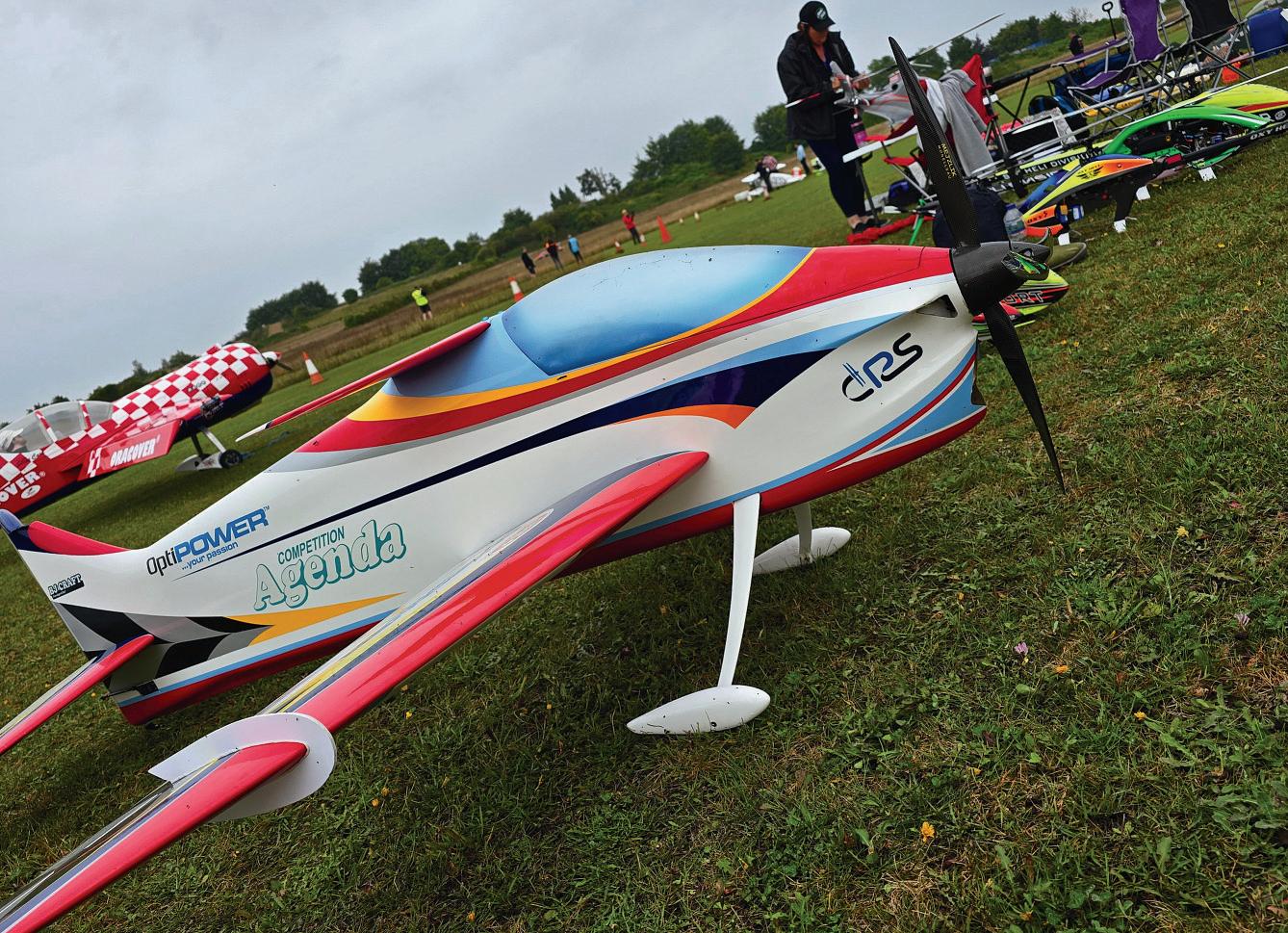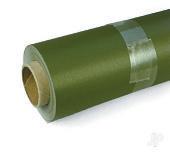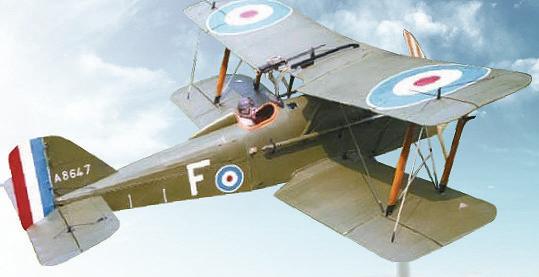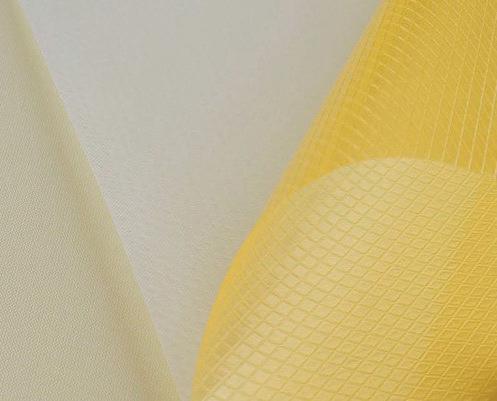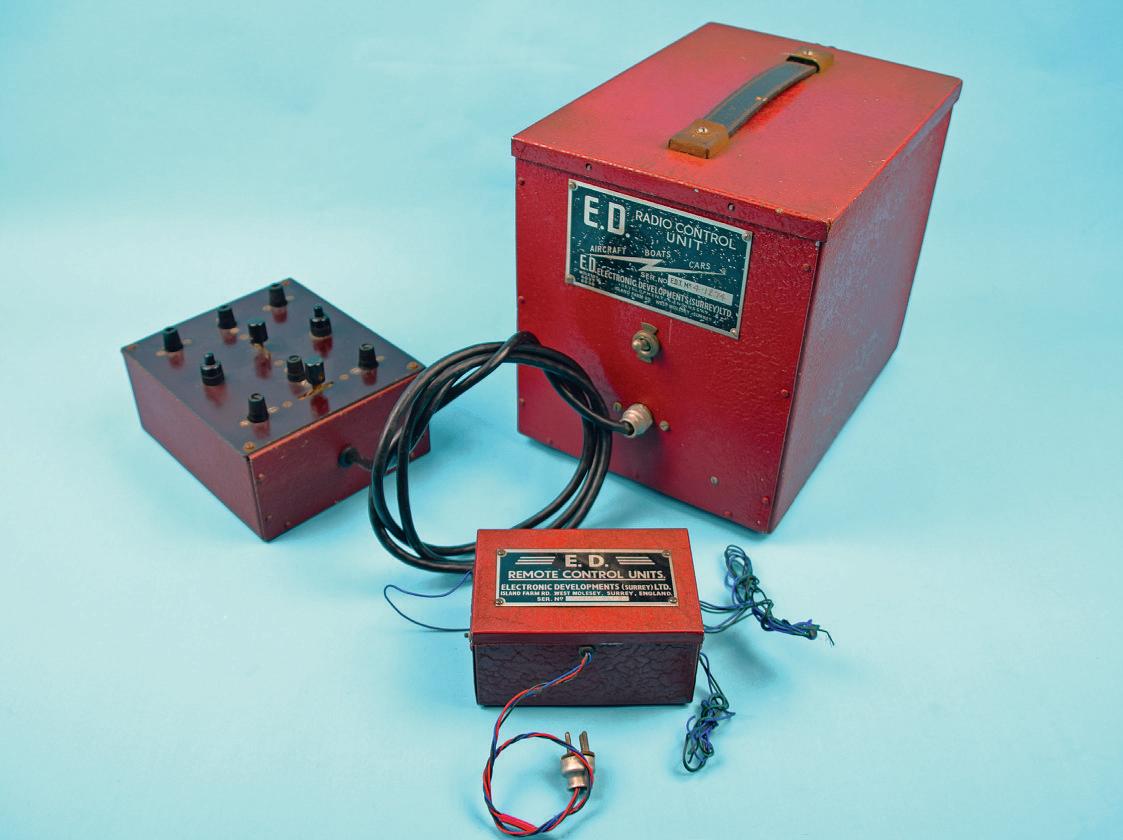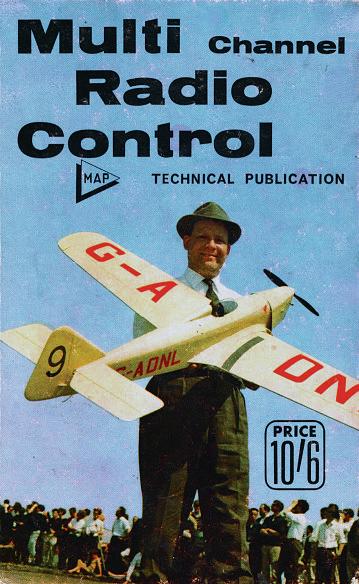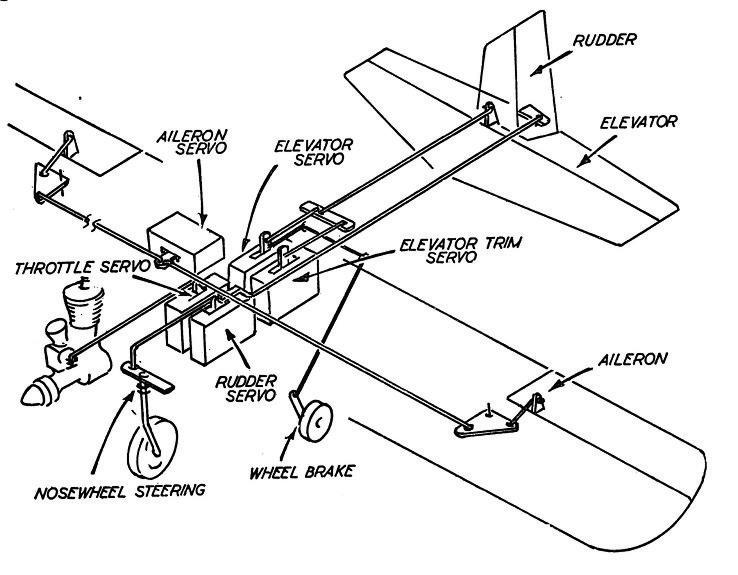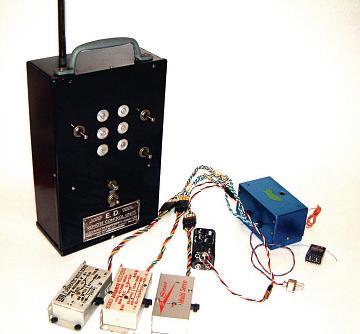
















































Welcome to the March2025 issueof RCM&E.

Likemanyofyou, no doubt,Iwas a bit shockedtofind outfroma couple of localclubs that my BMFAA andBcertificates, which Ipassed many yearsago,werenot considered su�ficient to issuemewith avalid CAA Flyer ID.And if Iwantedt carryon�lying at those clubs,I would need to pass either the CAA DMARES (Drone& Model Aircra�t Registration&EducationScheme) test or obtainthe BMFA RegistrationCompetency Certificate
issue me with a valid ID And I wanted to Registration & Education Scheme) obtain the you take that and BMFA directly!) So,
Now, Iamasimple soul andregardlessofthe irritationthis caused me,Ithought Ishould crackon pronto anddowhat Iwas told. (I know,Iknow, but now’s not the time norplace to go into all the details andthe frustrationcaused by this situation.I’ll let youtakethat up with the CAA andBMFAdirectly!) So likemanyaeromodellers,Idecided to let the BMFA deal with the CAA on my behalf andtakethe BMFA RCCtest
Ilistened to some tall tales from acoupleof local modellers who said that the test was‘un-failable’,which is probablytrueifyou dosomebasic preparationand have taken the time to read the CAA Article 16 Authorisationguide on the BMFAwebsite (https://rcc.bmfa.uk/article-16).
There’salso nothing stopping youfromhaving this document to hand, either printed out or on a separate screen or device,whilsttaking the test



















It all sounded easy enough so in my wisdomI decided to jump right in andstart the test,thinking that my decades of safe model �lying would stand me in good stead. Andsoitdid, but it wasn’t long before asmall degree of hesitationcrept in, makingme scourthe above guide forclarification.There’s also afew dronerelatedquestions which needed abit of thinkingabout.Ishould also mention thatI rather stupidlydecided to start the test a�teralongday at work,with the beginnings of anastyheadache and a20-minute ‘Dinner won’tbelong!’ deadline issued to me by my good wife.
Thetest consists of 40 mostlymultiple-choice questions,with afew ‘tick all thatapply’questions too. Thepass rate is 75%. Su�fice to saythatI passed with plenty of room to spare but Iwas frustratedto blowafew questions by my totallackofpreparation So,although Iendedupwith ashinynew BMFARCC certificate fresh from my printer,bynow Ialsohad areallybad headache anda rapidlycooling plateof food on the kitchen table,not to mentionafrosty receptionfromMrs.C,for my trouble
Don’tpanic dearreader if youhavestill to take the test.Itreally is no big deal, but pleasedon’t underestimateitand do take the time to do some basicpreparationbeforehand.I’d sayto give yourself aclearhourtoget readyand takethe test anddohave areadthrough the Article 16 Authorisation Guide, leaving it available close by forreference whilstyou takethe test.Makesurethat youare relaxedand in agoodframe of mind beforestarting,withoutany external pressures. That wayyou won’tneed adose of paracetamol a�terwards andbetucking intocold sausages andmash!
One last thing, just to cheer youup. It wasonly a�tertaking the test that Irealised that the certificate only lasts forfive years. So,I’ll be doing it all again at the start of 2030! Grrr
Nowfor aquick look at some of the main articles in this month’s magazine.Let ’s startwith ourregular ‘RetroRamblings’ column in whichShaunGarrity looks at Reed radios,Remconhome-built sets and aflying model by Meccano. In ‘Best Of British’ DannyFentonrevels in alatesummer gathering of British designs at BMFA Buckminster.Next, our ‘Just ForFun’column catches up withDavid Ashby as he finds some modernparallels when reading a pile of old magazines andthen flies arecent acquisition.Next, in ‘Drawing APlan’ oneof RCM&E’s favouritemodel designers,Lindsay Todd describes the first steps in drawing up aplanfor a semi-scale aircraft. Another popularplandesigner, PeterMiller,follows with‘Estimating Materials’ as he describes howtomakeashopping list forwood andother materials needed to build from aplan. It ’s been awhile since we have offeredplans fora high wing trainer andBertrandChoupin steps in to fill the gapwith ‘Ambisagrus’,based on aclassic design. In ‘One Man& His Shed’ Dave Goodenough finds anew supplier forhis carbon requirements, browses the local ‘Middle of Lidl’ andtest flieshis latest simple scale design. Then it ’s overtoJulie Fisherwho reports from Denmark on theF3CN Europeanmodel helicopter championships.In ‘Aerobatic Scene’Keith Jacksonreports from the UKF3AAGM which introduced thenew Entr yLevel schedule forbeginners andhealso says hello to the UK F3ATeamfor 2025. To capthings offRon Grosser reports from the Port Lincoln Model Aerosport Club’s fly-in all theway down underin South Australia.
Ihope youenjoyreading it all.
HappyFlying!
Editor: Kevin Crozier
MortonsMedia Group,Media Centre, Morton Way, Horncastle,Lincs LN9 6JR kcrozier@mortons.co.uk





















AND DIGITAL





























































On thecover
Photo: DannyFenton
Late September2024saw many modellerscongregateatthe BMFA National Centre at Buckminsterfor theLaser andBest-of-British Fly-in Theevent caught theimagination of many aeromodellersand was well attended.Our scalecolumnist DannyFenton hada wonderful time catching up with people, as well as themanyRCM&E forumiteswho were outinforce, taking theopportunity to discuss theChipmunkand Fury Mass Builds that were runafew years ago, especially theoneswho were stillworking on theirmodels







Contents
Regulars
8 SWITCH ON
Ourlatestround up of model� lyingnews.
61 COUNTERPOINT
Anotherselec tion of newkit s, bits and gadget sfor youtobuy
68 ALLWRITE
Have your sayinRCM&E’s monthly chat room
76 PILOTS’PICTORIAL
Send us apic ture of anew or favourite modeland it couldappearinour reader s’ models galler y
92 GOINGPLACES
Ourupdated list of modelevent sand competitions foryou to visitoverthe next fewmonths
94 MARKETPLACE
Sell o� fyourunwanted airframesand enginesormaybe buya fewnew ones
95 NEXT ISSUE
Take alookatwhat’scominginthe April‘25 issueofRCM&E
98 PARTINGSHOT
Mike Freemanwas behind thelensat Weston Park,photographing aCARF GeeBee R2 landingwhenasudden crosswindtried to tipitover.
Volume 68 |Issue 03
fir st st epsindrawing aplanfor asemisc aleair cr a� t
44 ESTIMATING MATERIAL S
PeterMillerdescrib es howt omake ashoppinglis tfor wo od andother materialsneeded to buildf romaplan
70 F3CN EURO CHAMPS
JulieF isherr ep or ts fr om Denmark on theEur op eanmodel helicopt er championships
86 PORT LINCOLNF UN FLY
RonGrosser report sf romthe Port Linc olnModel Aerosp or tClub’s� lyin,all thew ay down underinSouth Au stralia
Columns
18 RE TROR AMBLINGS
ShaunGarrity lo ok satReed radios, Remc on home -built sets,a� lying mo delbyMec cano andevena mo dern moulde dsoarer!
32 JUST FORF UN
DavidA shby finds some mo dern parallelsinapileofold mo del maga zinesand �liesa re cent ac quisition
62 ONEMAN &HIS SHED











Reviews
10 TOPRCMINIWARBIRDS
DavidA shby test sa pair of gyro equipped smallmilit ar ytrainer s
Features
24 BEST OF BRITISH
DannyFentonjoins thecrowd sata late summer gatheringof(mostly!) Britishdesig ns
38 DR AWINGAPLAN
OneofRCM&E’s favouritemodel designer s, Lind sayTodd, describesthe

Dave Go odenough finds anew supplier forhis carb on re quir ements, br ow sesthe lo cal‘Middle of Lidl’and test �lieshis latest sc aledesig n
78 AEROBATICSCENE
KeithJackson report sonthe newEntry LevelF3A sche dule for beginner sand says hellot othe UK F3 A Team for2025
Free Pro-Plan
48 AMBISAGRUS
It’s been awhile sincewehaveo�fered a Pro-Plan forahighwingtrainer.Bertrand Choupinfillsthe gapwithhis updated versionbased on aclassic design



XFLY SPITFIRE SSCR AMBLE
Just beforethe end of 2024, RCM&E wasasked to give our opinionofaprototype model of a new R/C Supermarine Spitfirethat wasbeing developed by XFlyModel in collaborationwith their UK distributor,CML Distribution A�ter seeing 3D design picturesof the proposed 1200 mm span fighter the editor took up the o�fer in very short order!
Theforthcoming kits,which should be finding theirway onto model shop shelvesinearly March, were the brainchild of CML’s MD, JasonVarley,who researched the backgrounds of the twoMk.IX variants being modelled. CML also backed this model with alarge contribution to its costs
With a1200 mm wingspan andconstructed using EPO foam,the Fly Spitfirewill be o�feredintwo mattefinish scale liveries,one being forMK392, the aircra�twhich Commonwealth ace‘Johnnie’Johnson�lew during the Normandylandings, completewith invasionstripes Ourprototype kit,however,was decoratedinthe alternative desert scheme of EN152,as�lown by Neville DukeinTunisia earlyin 1943. This distinctive livery is also theone adopted by Supermarine SpitfireLFI c, MK356ofthe Battle of Britain Memorial Flight,inwhich colours it wasrepainted in 2017.
According to CML’s promotional literature, ‘XFly’s new Spitfres are supplied with a4-blade propeller,an accuratecanopyoutline,pilot fgure, exhaust stacks,cannons and outward retractable electric landing gear.The large batteryhatch can accommodate a4S2600 -4000 mAh4SLiPo.
Thecombinationofa 3541-KV745 motor and a40A brushless ESC offers plenty of powerfor asatisfying scale performance.This model uses four panel split flaps,akin to its full-size counterpart.Day-brightLED wingtip lights aid visibility and add realism. RRP of both models will be £299.99”
So,what dideditor, Kevin think of the new desertSpitfire:
‘Tobehonest Icouldn’treally fault the assemblyofXFly-Models new Spitfreasitwent together very quickly and without any issues,bearing in mind that Ididn’t have amanual to work from. (A short but detailed manual is now available with production kits.) Theone-piece wing, completewith readyftted flaps and electric main undercarriage,simplybolted in place with four hex head countersunk screws, dittothe twotailplane halves. I’malwaysa little concerned about this type of tail fxing as the mouldings need to be very accurate to ensureno horizontal mismatch between the wing and the tailplane But in this case,itwas all spot on, so no packing at the tail wasrequired.

Theonlyset-upitemtonoteisto disconnect the flap linkages before operating the flap servosfor the frst timeincase they areover-drivenand damage either the servo gearsorthe linkages –orboth! (Itwas reassuring to see aprominent notetothis effect being taped to the internal packaging of production kits.)
Having recentlyjoined the Chedworth RCFC to take advantage of their tarmac strip,I wasa little concerned aboutthe risk of anose over and inadvertentlytrimming the nicelymoulded 4-blade prop -even with asparetohand! So,I enquired about asuitable 2-blade prop to use forthe test flights,a 12 x8Ebeing XFly’s advice.I also asked forcontrol
throwsand the recommended balance point.The former came as percentages (ofwhat,I wondered?) so Ifell back on my ownexperience to set up a three-position flight mode switch, allowing me to reduce or increase aileron, elevator and rudder throws on the frst flight by quickly operating asingle switch.
As forCG, the recommended point is 65 mm back from the leading edge at the wing root.While waiting for an answer from XFly,I researched the balance point of other R/C Spitfres, albeit plan models,and the consensus seemed to be at around 30% chord. This would place the CG acentimetre behind the recommended position. But trust me,XFlyknowwhat



like this,we’ll alwaystry to let youknow.
they aretalking about,asIwas to fnd out on the model’s second flight
To obtain the stated CG Ihad to place my 4S 3200 mAhVolz LiPo pack as farforward as possible in the generous batterybay.Evenso, the Spitfrewas atad tail heavy. (I noted that with this LiPoalone the model balanced on my calculated30% marks,soIbanked this knowledge for the test flights.) To get the prototype model to balance at the recommended position of 65 mm Ineeded to add a 70-gram strip of lead to the 340-gram batterypack, secured with Velcro.
Theappointed flying daydawned foggy and whilst it cleared as I made my wayupthe hill towards RAF Chedworth, Iwas morethan alittle disappointed to see the strip enveloped in lowcloud when Iarrived. It transpired that Ihad arrived during an EDF jet flying session, so Ijoined acheerfulbunch of clubmembersto wait forthe murktoclear.I wasjust about to throw in the towelwhen suddenlythe sun made an appearance andthe foglifted.
Despitespoiling the looks of this fne model by ftting an APC 12 x8E twoblade prop forthe frst flight, which meant that the spinner could not be used, the desert scheme drew several admiringglances,which did surprise me alittle as Ithought most people would want the alternative grey/green camo version instead. But no,most of the pilots said they would opt forthe desert version!
After arange check and afnal control check Ilined the Spitfreup
onthe strip and reminded myself to hold in full up elevator and begin the take-off roll at lowspeed, ithaving been several years since my last Spitfre take-off from tarmac.Even so,the poweravailablecaught me by surprise and despitemycaution the tail lifted tooquicklyand -zing! -the carefully balanced APC prop wasrapidlytrimmed to 11 inches! By nowthe model had lifted offand wasclimbing with gusto, despitestill being at relatively lowpower.So, I decided to concentrateontrimming her out.I flew her in broad circuits at mid-powerand Iampleased to say that my estimated control throws resulted in an easy-to-handle aircraft. Itentatively cycled the undercarriage to check forany changes in trim, with nothing of noteseen, beforelining her up in abroad, sweeping approach fora gentle roller landing. Lovely!
Before flight twoIcheckedthe prop (nowdefnitelyan 11 x8!) forany damage to the length of the blades and sanded atinyamount offthe tip of the heaviest blade to correct a slight imbalance.Asshe wasflying so well with the unintentionally modifed prop,I decided to reft it for flight two, especiallyasI nowwanted to tryremoving the nose weight and flyher at the 30% chordCG position. That flight didn’t last long becausealthough nothinguntoward happened, Ifelt that she washappier at XFly’s recommended CG position, so the strip of lead wasreftted.
Forflight three Iwas really getting in the groove and she looked

marvellous, especiallywhen pulling large loops (well, as large as the low cloudbase would allow!) and very scale likebarrel rolls,all with the electric main legs retracted. Time now to trythe flaps at adecent altitude and with no surprises Itried formy frst approach and go-around at half flap.The brownfghter trundled past with no ill effects on the controls,so Ipulled her away and fnished the flight with afull flap landing. The drag from the four flaps wasmuch morenoticeable and the Spitfre landed at amuchlower speed. Iwas abit tooentranced and failed to get enough up elevator applied in time to prevent agentle nose over at the end of the landing roll, thankfullywith no further damage to the prop!
In summary, Ifound XFly-Model’s prototype SpitfreMk.IX to be easy and funtofly.She looks great and I doubt if anyone present would have noticed that she wasa pre-production
kit,although maybe some of the stickers could have been alittle better applied at close inspection. Iwould defnitelyrecommend sticking to the suggested CG position and to thisend Iwill be trying aVolz4S4200 mAh LiPoonour next outing, which weighs in at 415 gand should allowmetoget rid of all of the nose weight
Finally, nowthat Ihavemyeye in with take offs and landings on tarmac with the Spitfre, Iwillalso swap over to the four-blade propeller supplied. (You mayhavenoticed that the flying picturesfeatured here, courtesy of Dick Spreadbur y, do not showthe two-blade prop used fortesting. Instead, we have Photoshopped on the four blader, just forappearancessake.)
As Iwritethis piece afull production kit forthe D-Dayversion has just arrivedinthe offce so look out fora full review of this impressive ARTF warbirdverysoon.’







